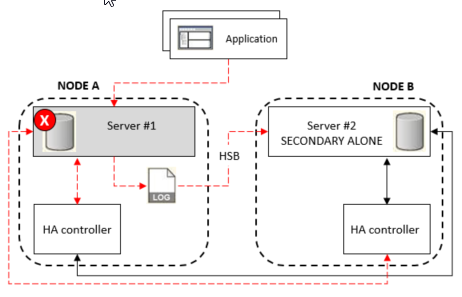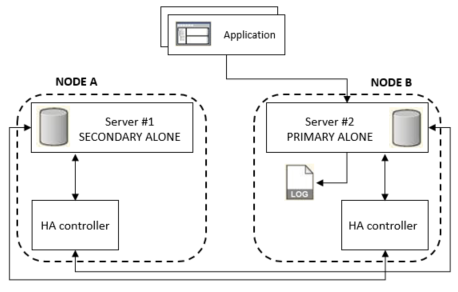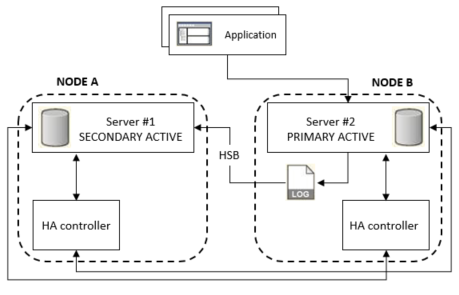|
Description
|
Illustration
|
|---|---|
|
The secondary server (Server #2) fails to connect to the primary server (Server #1) and Server #2 switches to SECONDARY ALONE state automatically.
|
 |
|
The HAC instance on Node B concludes that the primary server has failed and switches Server #2 to PRIMARY ALONE state.
Applications access data from Server #2 (new primary server).
Server #2 saves all transactions in the transaction log.
At the same time, the HAC instance on Node A restarts Server #1 in SECONDARY ALONE state.
Note If Node A failed rather than just Server #1, Node A and the HAC instance on Node A must be restarted before the HAC instance can restart Server #1.
|
 |
|
The HAC instance on Node B connects the primary and secondary servers.
Server #1 reads and applies any outstanding transactions from the transaction log on Server #2.
Note If the HAC cannot connect the servers, the HAC can be configured to initiate a NETCOPY operation to synchronize Server #1 with Server #2.
|
 |